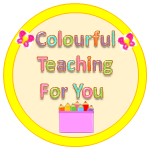It’s important to teach about gratitude in the classroom or at home because focusing on it can help you and your children with your mental health and can invite more rewards into their life.
Many experts believe that negative thoughts can have a negative impact on our mental health. Reframing the way we think and appreciating the good in our life invites more positivity in our life because we’re putting this positive energy into the world and actively looking for them.
If you take this a step further and show gratitude toward a person, it can spread this joy into someone else’s life.
Gratitude can also help parents and educators know what’s going well with their kids as they make note of it in the following steps.
Actionable Steps:
#1. Learn and Reflect
Talk to children about the meaning of gratitude. For young children or English Language Learners (ELL) ask them about the term, “thank you.” Brainstorm ways that we can show others that we are grateful for them.
Then have children reflect on the what gratitude means to them and where they can see it in their life. You don’t need to prep for anything. Download the following resource, print out a copy for each child, put it in their folders or binders and have them reflect on one prompt a day or one a week. Once your kids have completed the prompts, revisit it the following term to see where and how they’ve grown. To make it more interesting, use this as quiet writing time and reflect alongside them so that they can learn from you as you model it for them.
#2. Love Your Peers
Pair each child every day until you’ve gone through all of your students. For example, if you have 30 students in your class and you pair them up, this activity will take 15-30 days to complete depending on how many pairings you want to do.
Have your students write notes of gratitude to each other. You can start it with a prompt like, “I’m grateful for you because…” or “I’m thank you for you because… or “Thank you for…” Give your students examples by telling them why you’re thankful for them or for someone else.
Once they’ve written their note to their partner, they can either exchange it with each other or you can get small bags that students can decorate and then every day each partner can put their completed note into their partner’s bag. You can give them this bag at the end of the activity, the end of the term or at the end of the school year. This will light them up. While you’re doing this activity it will serve as cute decor for your classroom.
#3. Show Appreciation
It’s good for children to show appreciation for others in their community beyond their home or school. One of the activities I do with my students is to show gratitude toward our local veterans, especially since Remembrance Day is close to Thanksgiving Day. It makes such a huge difference to them.
If you’d like to engage in this FREE activity, check out the following article, “A Special Remembrance Day for Kids Activity to Help Them Make a Difference” as I lay it out in a step-by-step format for you. You can also click on the image below for more information.
Recap:
Let’s recap really quickly. Today, we looked at the following:
- The importance of teaching your children how to be thankful.
- Three simple ways to teach your kids about gratitude: learn and reflect, love your peers, and show appreciation.
Free Resources:
If your children are struggling to hand in assignments on time, check out the following video training: 3 Steps to Teach Children How to Overcome Procrastination to Increase Productivity.
Next Steps:
For calm down areas on a budget, for your students who have autism, CLICK HERE.
You’re welcome to join us inside ADHD and Autism Self Regulation by CLICKING HERE or on the fallowing image.
If you found this video beneficial, would you do me a favor? Share this with your family, your friends, your loved ones, your co-workers or someone who you think could benefit from this. Thank you!
I’ll see you next Friday at 5:30pm PST.
Until I see you next time, remember to create, experience & teach from the heart.
Take care,
Charlotte
Disclaimer: I’m a teacher and a parent. I’m not a medical professional, so please don’t take this as medical advice. The advice that I provide in my videos and online are strategies that I have used in my own class or at home that have worked beautifully.





